This week, how humans locate themselves using echolocation, an attractive new prospect for magnetic materials and a new method of unclogging arteries. Plus new insight into the shape of an electron and how a bit of culture could bring a lot of happiness!
In this episode
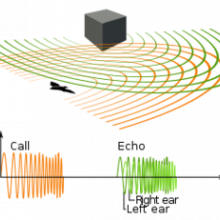
00:17 - How human brains can echolocate
How human brains can echolocate
Researchers from Ontario this week have identified which parts of the brain are involved in human echolocation. Traditionally associated with bats, whales and sonar, echolocation is a technique used to find one's position by bouncing sound off surfaces and waiting for the echo.
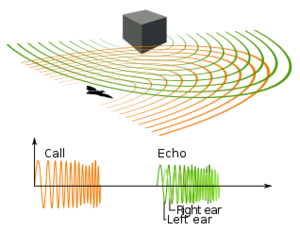 The study, performed by Lore Thaler and colleagues at The University of Ontario and the Rotman Research Institute, compared the brain activity between two study subjects. One had been blind since thirteen months; the other had developed blindness in adolescence.
The study, performed by Lore Thaler and colleagues at The University of Ontario and the Rotman Research Institute, compared the brain activity between two study subjects. One had been blind since thirteen months; the other had developed blindness in adolescence.
Both these individuals used clicking sounds, made with their own mouths, to glean information about their surroundings. Both blind subjects were able to tell when a panel placed before them was flat or concave and whether it was 20 degrees to the right or left. Outdoors, they could tell if they were standing in front of a car, tree or lamppost. But, the researchers had to overcome the problem of echo-locating inside the brain scanning fMRI machine, where it's noisy and there's nowhere to go. So what they did was to pre-record echolocating sounds from microphones at the subject's ears and then played the recording back to them inside the machine.
Publishing in PloS One, they found that in both blind subjects the calcarine cortex, an area of the brain normally dedicated to processing visual information in sighted people, displayed greater activity when the subjects listened to the echo sounds. This implies that they could see something from the sound of the echoes. This was compared to fairly constant levels of activity in the part of the brain typically used for processing auditory information when they listened to the echoless clicks - so it does look like they're seeing with sound rather than hearing.
02:41 - Attractive new magnetic material
Attractive new magnetic material
A material that temporarily transforms itself into a "permanent" magnet when a small voltage is applied has been discovered by scientists in Japan.
Although substances with similar behaviours have been described 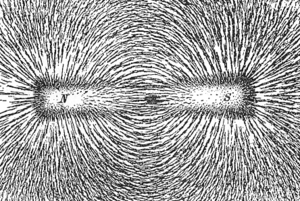 before, these have worked in this way only at super-low temperatures close to absolute zero. But what sets this new material apart is that it exhibits this magnetic phenomenon at room temperature.
before, these have worked in this way only at super-low temperatures close to absolute zero. But what sets this new material apart is that it exhibits this magnetic phenomenon at room temperature.
Tokyo University's Tomoteru Fukumura and his colleagues, who have announced the discovery in this week's edition of the journal Science, made the new magnetic material by replacing 10% of the titanium atoms in titanium dioxide (TiO2) with cobalt atoms. The resulting titanium cobalt oxide compound, they found, is naturally "paramagnetic", meaning that it is weakly attracted by an applied external magnetic field. But, if a small voltage is applied, then the material becomes magnetic in its own right.
By making fine measurements of an entity called the anomalous Hall Effect, the team discovered that, when electrons are pushed into the substance by a voltage, the electrons of the cobalt atoms are triggered to all adopt the same direction of spin, which is what underpins the magnetic field created by a ferromagnetic material. This effectively turns the material into a "permanent" magnet, at least until the voltage is shut off.
Dubbed "chameleon magnets" owing to their ability to change their appearance in this way, the discovery is very exciting because it has the potential to open up a range of applications in an emerging field known as spintronics.
For instance, electrons can tunnel from a magnetic source material through a barrier to a second magnetic target much more easily if the two have the same magnetisation. And so a magnet that can be turned on and off could provide a miniature microswitch or transistor.
Magnetic materials also alter the polarisation of light reflecting off their surfaces. So if a magnet can be turned on and off very quickly and with high resolution, coupled with a polarising filter such a system could be used to control the brightness of a light source very rapidly in order to send a greater density of data down the fibre-optics that underpin modern communications networks, including the Internet.
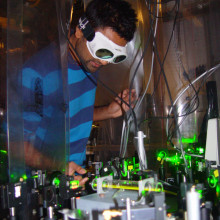
05:37 - The Shape of the Electron
The Shape of the Electron
Jony Hudson, Imperial College London
Diana - What is round and measures 1 billionth of a millimetre across? Yes, you guessed it, it's the electron. Theories have predicted that these particles should be spheres, but proving this has been tricky. Now after 10 years of trying, a team at Imperial College London have succeeded, as Jony Hudson explained to Chris.
Jony - So what we've been working on is we've been trying to measure the shape of the electron. The conventional theory suggests that the electron is round like a point particle, but we've been wanting to check that and to see whether it really is round.
Chris - Should that really make a difference?
Jony - Yeah. It's important actually and the reason it's important is because although our current theories predict that the electron should be round, some of the advanced theories that go beyond that predict that it won't be round, that it'll have a distortion. And so by doing this measurement, we look at it as a way to search for physics beyond the physics that we know about at the moment.
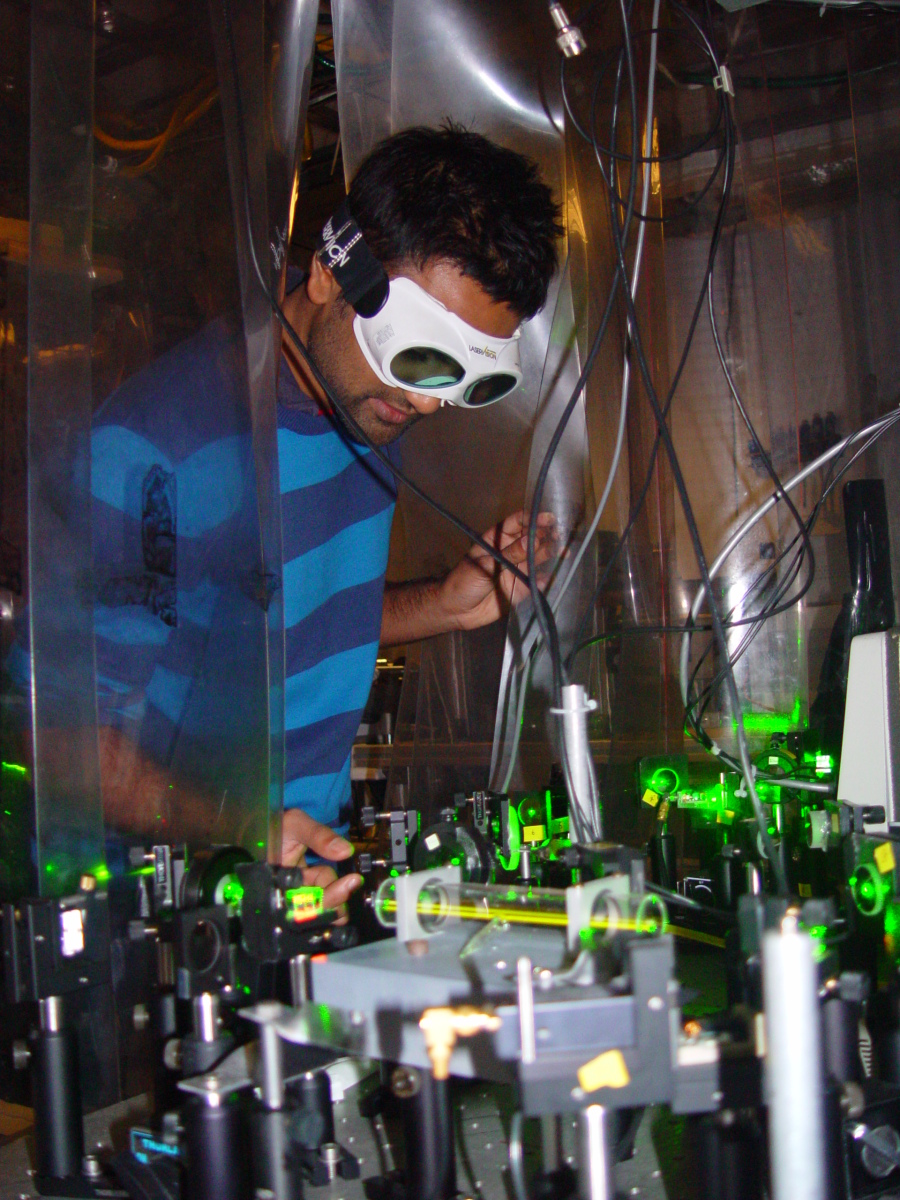 Chris - And just to give people some grasp as to the scale of the problem that you're grappling with, how big is an electron?
Chris - And just to give people some grasp as to the scale of the problem that you're grappling with, how big is an electron?
Jony - The size of the electron, it depends how you measure it. The classical, what they call the Compton wavelength is one measure of the size of the electron, and that's 10-12 metres, so 1 billionth of a millimetre.
Chris - Pretty small in other words.
Jony - Yes.
Chris - How on Earth do you go about trying to size up something like that?
Jony - If the electron were perfectly round, when we put it in an electric field, it would just spin around its axis in a perfectly regular way, whereas if it's not round when we put the electron in the electric field, it will develop a kind of wobble, a very distinctive motion where it's wobbling around its axis. A lot like if you were to put a gyroscope on a stand at an angle, that kind of wobbling motion. And so we look for that wobbling motion.
Chris - Is that because the electron itself is an electrically charged particle? So if you have something which is electrically charged moving, and it's moving in an electric field therefore, the two fields are going to interact and that's going to impart a movement on the particle that you can then pick up?
Jony - Yeah, that's basically it. If the electron were round, then it wouldn't matter which way it was oriented with respect to the field because it would just look the same. If you turn a perfect sphere around a bit, it still looks the same. Whereas if the electron say if it were egg-shaped, it would have a bit of distortion to it, it matters which direction it's pointing in relative to the field and so, there's a force on it, trying to align it with the field, and it's that force which creates the wobbling motion.
Chris - So how did you actually do it?
Jony - So what we do, we don't just use a bare electron because there are some real technical difficulties with working with electrons, namely that they're electrically charged. So what we did instead is we used the electrons in a particular molecule, a molecule called ytterbium fluoride and this molecule has an unpaired electron orbiting around the outside of it, and that's the electron that we studied. What we look at is if the electron isn't round, it starts wobbling in its orbit around the molecule. So actually, what we really look at is we look to see how the molecule spins.
Chris - And what do you find?
Jony - What we find is, as best we can tell and we've looked really very carefully, there's no wobble. The electron shows all signs of being round at our current sensitivity.
Chris - So that means or that must have quite big implications for other things in the quantum realm then?
Jony - Yeah. Like I say, our current theory of physics predicts that the electron should be really almost exactly round. And so, the first thing to say is our work doesn't contradict our current theory of physics which was - I guess a disappointment for us, it'd be much more fun if it did contradict the theory, but you can't have everything! What it does do is if you look at some of these theories. You know, I said people propose these theories that go beyond our current theory of physics. Some of them predict that the electrons should be really quite distorted and actually, we've shown that it's rounder than some of those theories would predict. So what's it allowed us to do is it's allowed us to constrain and guide the development of theories that go beyond our current theoryof physics. It places limits on what theories could possibly be right.
Chris - And do you think all electrons are made equal? What I mean by that is, in the context in which you studied the electron, it behaved like that, but what would happen if you took a different molecule as the donor and studied that? Do you think you might be able to get an electron that was distorted?
Jony - No, no, no. There are no forces in the molecule that can distort the shape of the electron. What we're measuring here is how the electron comes from mother nature. The molecule itself is not placing any forces on the electron that are distorting it.
Chris - So you've nailed that one, myth busted, but are there any actual physical applications now that you are armed with this knowledge that you can use to take this forward?
Jony - Well one thing that physicists are very interested in is there's a big mystery in cosmology, a big mystery in describing the origin of the universe, and the mystery is what they callthe matter-antimatter imbalance. So our current theory of physics, the best one we have, says that in the Big Bang, matter and antimatter were created in equal measure. Further, our theories of physics says that the laws that govern antimatter are basically the same as the laws that govern matter. And so, the logical conclusion would be that we should have an equal amount of antimatter and matter today. But astronomers have looked and you can search the skies. You can look wherever you like. You find only incredibly tiny traces of antimatter and this is a big mystery for people.
Now one potential solution is that there's a slight difference in the behaviour of matter and antimatter, and this would mean over the billions of years that the universe has existed, it could tip the balance and the matter could start to dominate over the antimatter. If the electron is not round, then you can show that it's not possible for it to behave the same as its antiparticle, the positron. So if the electron is not round, this would indicate that there has to be a difference between the behaviour of matter and the behaviour of antimatter. And so, that's one of the motivations for studying this. People are looking for a difference between the behaviour of matter and antimatter. They think there must be one that we haven't discovered yet.
Chris - So could you take your technique and apply it to the antihydrogen that has been successfully made at CERN and ask that very question?
Jony - That would be a fantastically interesting experiment, but I would say our experiment was so difficult that it took us over a decade of extremely hard work to do. Their experiment is so difficult that it took them over a decade. If you sort of multiply them together, I can't even begin to imagine how difficult that would be!
Chris - Jony Hudson from Imperial College and amazingly the precision with which they say they've made those measurements is equivalent to, were you to scale the electron up to an object the size of our solar system, their measurements are precise to within the thickness of a human hair. Amazing piece of work. It's published this week in the journal Nature.
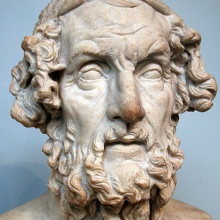
12:29 - Being a Culture Vulture makes for a Happy Vulture
Being a Culture Vulture makes for a Happy Vulture
People who take part in or attend 'cultural' activities tend to have better physical and mental health, according to a new study out of Norway...
Publishing in the Journal of Epidemiology and Community Health, Koenraad Cuypers and his team sent surveys to tens of thousands of people in a rural region of Norway asking questions about their activities, happiness and perceived health. The researchers then took the results, ran some statistical tests and found this association between cultural activities and health.
Cuypers, who's from the Norwegian University of Science and Technology, found that it was especially men in whom this relationship was most apparent. More than females, males reported higher levels of satisfaction, happiness and better perceived health if they took part in the receptive activities such as watching sport or going to a museum.
They also found that people in lower socioeconomic groups were less likely to attend either type of cultural activity, and that women were especially happy if they took part in more creative forms of culture. In addition, people tended to take part in more cultural activities the older they became up until they reached their forties, when it started to decline again.
The researchers stress they can't identify a causative relationship; they don't know if a bit of culture makes you happier or if happier/healthier people tend to involve more culture in their lives.
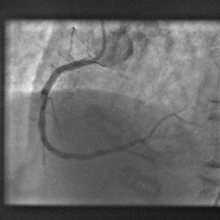
15:23 - Bottleneck cleared in clogged artery research
Bottleneck cleared in clogged artery research
A dye used medically for over fifty years could be a shot in the arm for investigating coronary artery disease, scientists have found.
Writing in Science Translational Medicine, a team from Boston, US, led  by Harvard Scientist Farouc Jaffer have discovered that indocyanine green (ICG), chemical formula C43H47N2O6S2Na, which has been used safely for over five decades to measure blood flow through the heart and liver circulations, can be used to highlight inflammed atheromatous hotspots threatening trouble in narrowed arteries.
by Harvard Scientist Farouc Jaffer have discovered that indocyanine green (ICG), chemical formula C43H47N2O6S2Na, which has been used safely for over five decades to measure blood flow through the heart and liver circulations, can be used to highlight inflammed atheromatous hotspots threatening trouble in narrowed arteries.
The team make the point in their paper that, although there are techniques for studying the progression of arterial disease in large calibre vessels like the aorta and iliac arteries, there is currently little on the table to aid in the identification of potentially troublesome areas for smaller arteries like the coronaries.
Seeking to address this challenge, the researchers surveyed a range of chemical tracers that might be helpful in identifying patches of rapidly progressive arterial disease. Such regions, which show more intense inflammation, are more likely to trigger thrombosis (clotting) and blockage of the vessel and are therefore a higher clinical priority for treatment.
Being highly lipophilic (fat-loving) the team wondered whether ICG might meet their needs and flag up fatty deposits in the vessel walls. It also absorbs and emits near-infrared light, making it a useful tracer molecule.
The team injected the substance into rabbits with damaged aortas, which are similar in size to human coronary arteries. Under a mciroscope, the ICG was found to bind with high selectivity to the diseased segments of the vessel. Moreover, it bound best in regions that were showing signs of rapid disease progression.
To determine how such an agent could be used for human imaging, the team inserted a probe into the aortas of a further group of animals and used near infrared imaging to plot the pattern of ICG signal coming from the inside of the vessel wall. This, they found, was a very close match with two other imaging techniques, one using ultrasound and another x-rays.
This shows that ICG could be used as a highly-effective and safe tracer to sniff out the smoking gun underlying arterial disease and therefore help cardiologists to direct their attention to those areas that need their input the most.










Comments
Add a comment